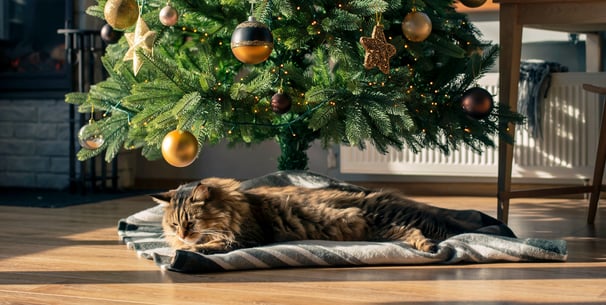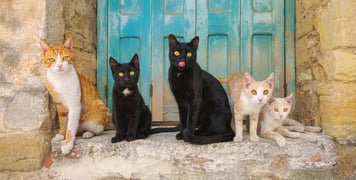Index:
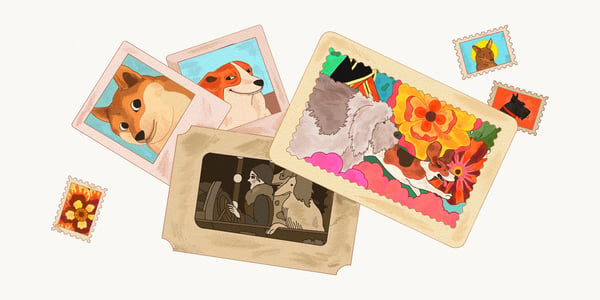


Introduction
Dog breeds, like fashion, have their moments in the spotlight. A well-timed film, a celebrity endorsement, or even a viral video can transform a relatively unknown breed into the canine equivalent of a Hollywood A-lister. Some dogs have held the top spot for decades, while others enjoyed their fifteen minutes of fame before slipping back into relative obscurity.
From the elegance of the 1920s to today’s Instagram and TikTok-famous pups, here’s a look at the breeds that captured the hearts (and homes) of the UK decade by decade.
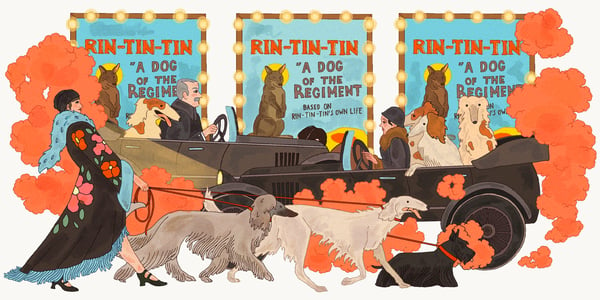


1920s: The era of glamour and aristocracy
The Roaring Twenties in Britain were characterised by luxury, style, and social status. Alongside haute couture and expensive, extravagant jewellery came a love for exotic, elegant dogs. The Afghan Hound, with their flowing coat and aloof beauty, became a must-have for the wealthy elite. At the same time, the Borzoi was often seen in society photographs as the ultimate symbol of sophistication.
The Scottish Terrier also enjoyed its heyday, appearing in portraits and country estates as a hallmark of the upper class.
Meanwhile, working dogs like the German Shepherd (then known as Alsatians due to anti-German sentiment from World War I) began to be valued for their intelligence and versatility, thanks in part to their use in police and guard dog work. Hollywood is also partially responsible for this rise, after making a star of Rin Tin Tin, a rescued German Shepherd, who appeared in over 20 silent films, cementing the breed’s popularity as both a loyal companion and a capable working dog.
1930s: Resilience and reliability
The Great Depression hit Britain hard, and whilst dogs remained beloved companions, practical breeds that were easier to keep became more common. Terriers, such as the Wire Fox Terrier and the ever-loyal Border Terrier, thrived in both rural and urban settings.
This decade also saw the first glimmers of the Cocker Spaniel’s popularity, particularly in sporting circles. With a cheerful temperament and manageable size, they quickly made friends in both countryside manors and city terraces.
1940s: War dogs and companionship
World War II saw the use of certain dog breeds for propaganda and patriotism. German Shepherds, Labradors, and Collies served in the armed forces and civil defence, working as messenger dogs, search-and-rescue helpers, and even parachuting into dangerous territory.
Dachshunds faced a temporary decline due to anti-German sentiment, but the charm of smaller breeds like the Jack Russell Terrier and the English Springer Spaniel kept spirits high in war-torn Britain. Post-war, these breeds transitioned seamlessly into family life.
1950s: Suburban living and the nuclear family
The post-war boom meant more families, more houses with gardens, and more room for dogs. The Cocker Spaniel dominated as the quintessential family pet, helped along by Disney’s ‘Lady and the Tramp’ (1955). Poodles became American icons of the era, perfectly groomed and ideally suited to suburban life.
But no breed shone quite like the Pembroke Welsh Corgi, thanks to Queen Elizabeth II. Having received her first Corgi in the 1930s, the young Queen’s fondness for the breed in the ’50s sparked a surge in Corgi ownership, making them one of the most recognisable dogs in the UK.
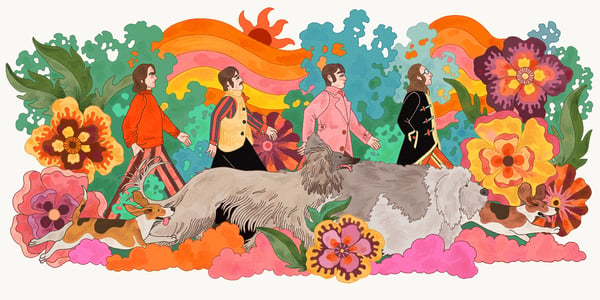


1960s: Swinging Sixties and pop culture pups
The ’60s brought a mix of both rebellion and cultural experimentation. The Afghan Hound saw a revival with their exotic look that suited the era’s bohemian style perfectly, while Beagles won hearts through Snoopy in the Peanuts comic strip.
British pop culture also played a part in the changing of puppy preferences due to Paul McCartney’s Old English Sheepdog, Martha, who became a muse for the Beatles’ music. Dalmatians also enjoyed a boom thanks to Disney’s ‘101 Dalmatians’ film (1961). Though adorable, many owners quickly discovered that their energy levels were more ‘marathon runner’ than ‘sofa companion’.
1970s: Individualism, utility and the rise of the all-rounder
As lifestyles diversified, so did the breeds people chose. Golden Retrievers and Labradors became the standard for family life; loyal, trainable, and endlessly cheerful. German Shepherds also continued to thrive as both working dogs and home protectors.
Small, exotic breeds like the Shih Tzu and Lhasa Apso entered the spotlight too, often seen padding around in homes that leaned into the decade’s love of unique, slightly unconventional pets.
The Staffordshire Bull Terrier also started to gain popularity in this era, praised for their loyalty and affectionate nature, particularly with children. Though small in stature, the Staffy became a big personality in British dog-owning culture.
1980s: Big hair, bigger dogs
The 1980s were a decade of excess, bigger hair, bigger shoulder pads, and yes, bigger dogs. Rottweilers and Dobermans became status symbols of extravagance, their strength and sleek looks appealing to the decade’s bold aesthetic. The Siberian Husky also gained fans during this time after films and sporting events highlighted sled dog racing.
Spaniels, Terriers, and the ever-reliable Labrador still held strong, offering balance to the era’s “power dog” obsession with breeds of a more wholesome and family nature.
1990s: Media power and purebred popularity
The ’90s were the golden age of TV dogs. The Jack Russell Terrier’s cheeky personality shone in TV shows and films like ‘Frasier’ and ‘Wishbone’, sparking a boom in demand. Border Collies enjoyed their moment in the sun after ‘Babe’ (1995), showing the world their intelligence and herding skills.
Yet the Labrador Retriever continued their unbroken streak as Britain’s favourite, with the Springer Spaniel, Westie, and Cavalier King Charles Spaniel close behind. These were breeds that fit the UK’s love of loyal, family-friendly dogs with a dash of countryside charm.
2000s: The designer dog boom
With the turn of the millennium came the “designer dog” explosion. Labradoodles, Cockapoos, and other crossbreeds were marketed as allergy-friendly, blending the best traits of two breeds (and often the cutest looks).
Small breeds got their moment too - Paris Hilton and ‘Legally Blonde’ made the Chihuahua the handbag dog of the decade, though more favourably in the US. French Bulldogs and Pugs, with their compact size and charming personalities, also started to become urban favourites.
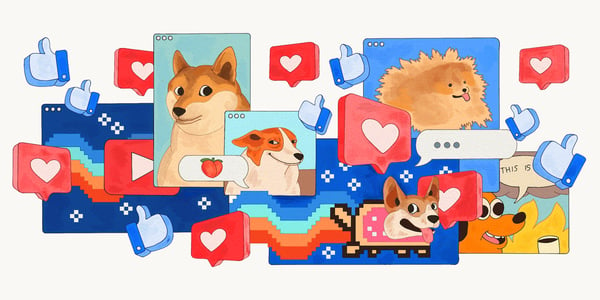


2010s: Social media stars
Instagram and YouTube turned some dogs into celebrities overnight. The Shiba Inu (thanks to the ‘Doge’ meme), Corgis with their fluffy bums, and Pomeranians with their perfectly groomed ginger hairdos all found fame online.
Rescue dogs also took the spotlight as adoption campaigns and celebrity endorsements encouraged people to “adopt, don’t shop”. Mixed breeds became not just accepted, but celebrated, as unique and lovable companions.
2020s: Health and heritage
The pandemic puppy boom reshaped the dog world almost overnight. With people spending more time at home, demand for breeds like Cockapoos, Cavapoos, Dachshunds, and Whippets soared. However, alongside the surge came a growing awareness of the health issues associated with overbreeding, particularly in brachycephalic breeds.
Many owners are now seeking healthier lines, ethical breeders, or adopting entirely. There’s also renewed interest in ancient breeds like the Basenji, Saluki, and Xoloitzcuintli, as people rediscover dogs with deep historical roots.
The constant through the changes
Though we can agree that dog breed trends might shift with fashion, film, and lifestyle changes, one thing remains constant: our bond with them. Whether you share your sofa with a timeless Labrador, a Y2K Chihuahua, or a rescue of mixed heritage, every dog has the potential to be the elite breed in your home.
Because it’s not about chasing trends or keeping up with what's popular, it’s about finding the right dog for your life and loving them for who they are, whether they’re Instagram-ready or less than picture-perfect.
Waggel Pet Insurance
Need more help? You're in luck if you're a Waggel Pet Insurance member. Along with our excellent coverage, we offer access to a 24/7 online vet to answer all your sticky questions, especially if you need grooming assistance.
Not a member? Why not get a quote now and cover your furry friend for a range of illnesses, all while enjoying our amazing perks and rewards.
Want more like this?
Get updates from us with helpful info, advice, answers to frequently asked questions and much more.
Index:
- Introduction
- 1920s: The era of glamour and aristocracy
- 1930s: Resilience and reliability
- 1940s: War dogs and companionship
- 1950s: Suburban living and the nuclear family
- 1960s: Swinging Sixties and pop culture pups
- 1970s: Individualism, utility and the rise of the all-rounder
- 1980s: Big hair, bigger dogs
- 1990s: Media power and purebred popularity
- 2000s: The designer dog boom
- 2010s: Social media stars
- 2020s: Health and heritage
- The constant through the changes
Related posts:
Get your quote
Along with our excellent coverage, we offer access to a 24/7 online vet to answer all your sticky questions.
